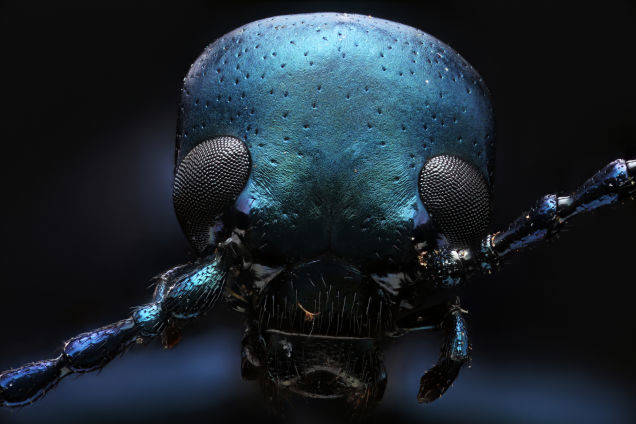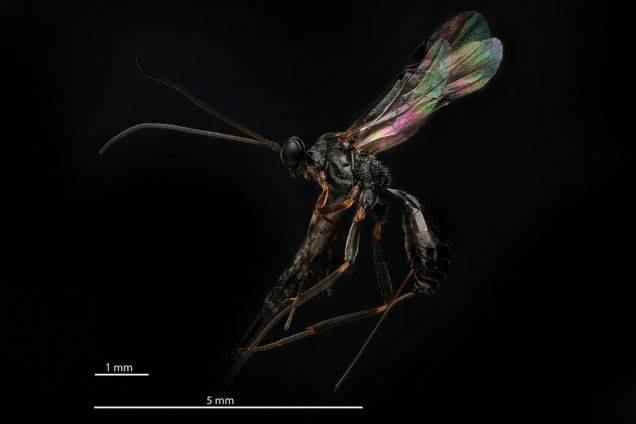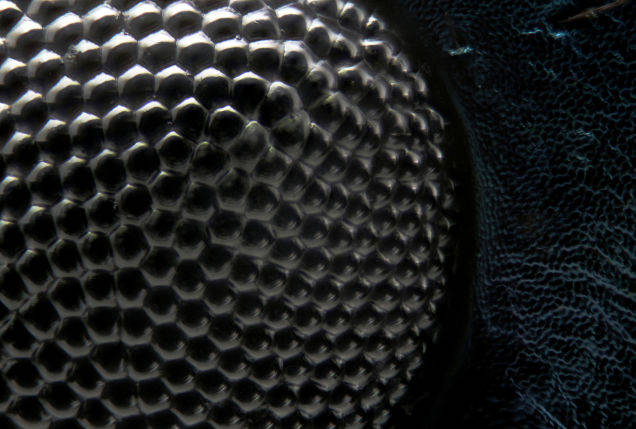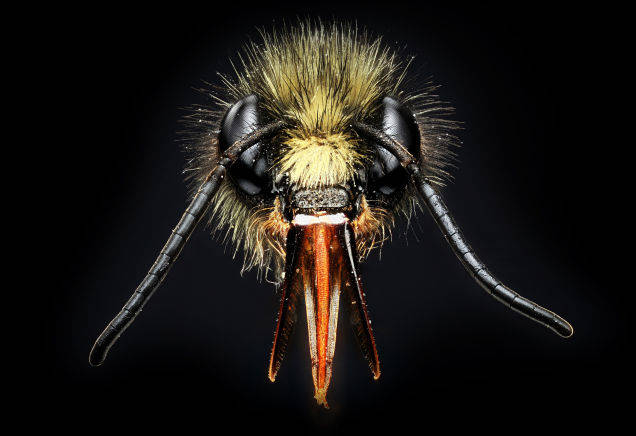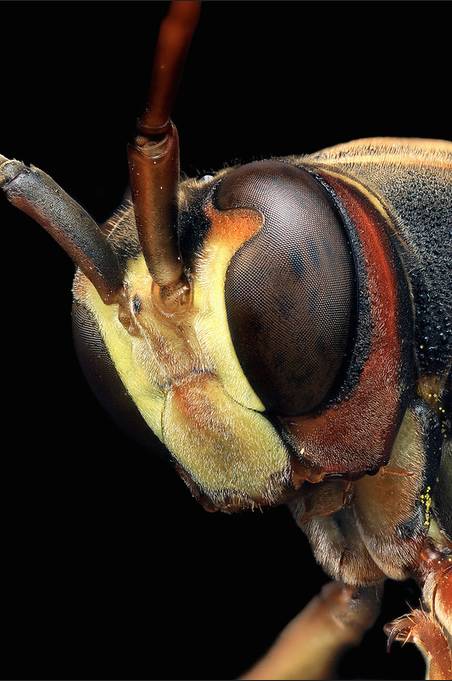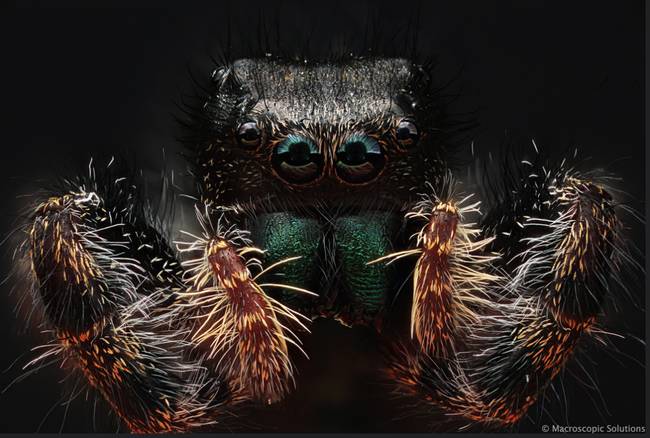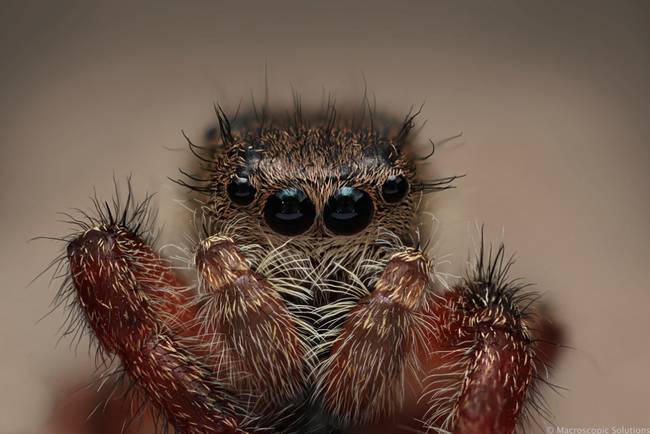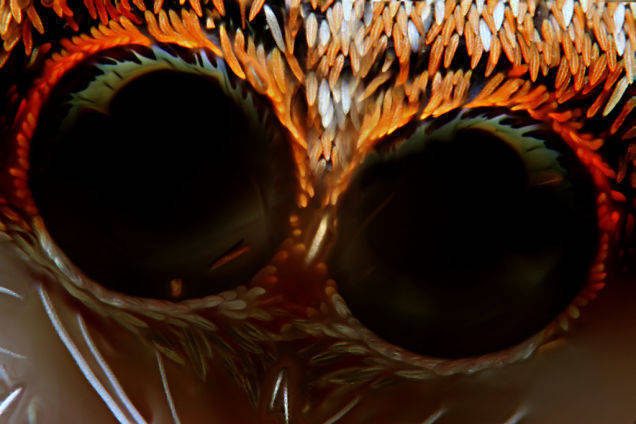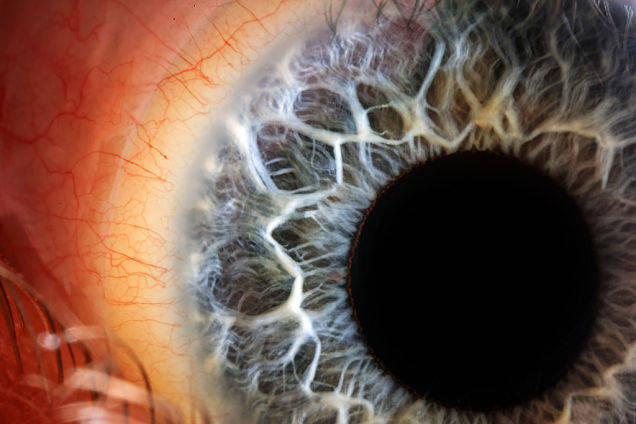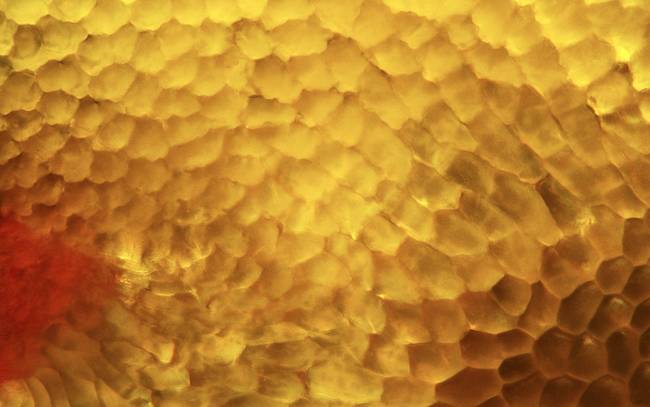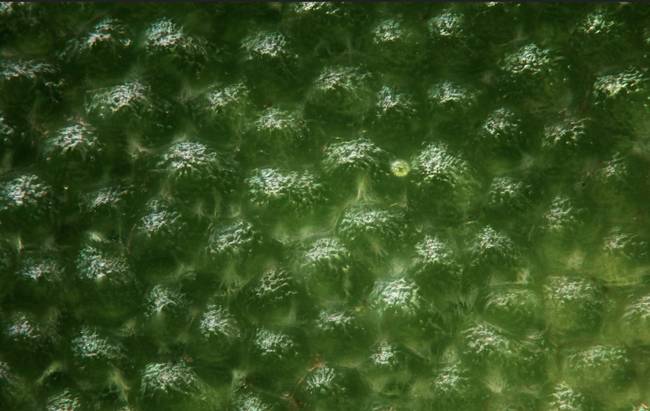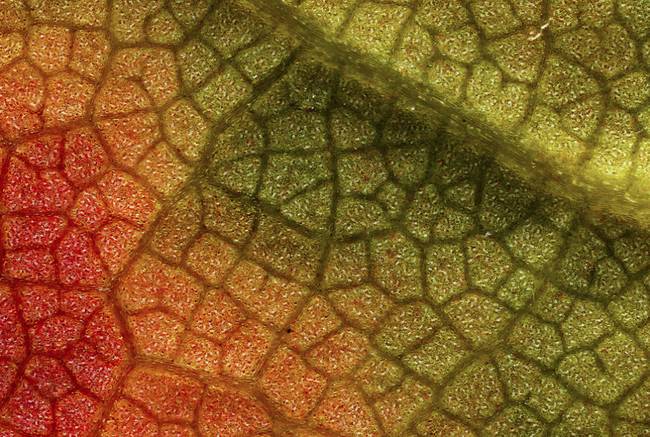The world is a pretty incredible place on a human-sized scale, but when you consider there’s so much we aren’t seeing? It gets even more amazing. Thanks to microscopes and macro photography, the smaller world has become increasingly visible to us. Now, as technology advances, the tiny, as well as the very large, are becoming more visible to us.
Macroscopic Solutions recently developed the Macropod, which the company calls “a low-cost, portable, three-dimensional imaging solution.” The tech can take sharp, detailed photos of the very, very small. Unlike a traditional macro lens, which allows for a relatively shallow depth of field, the Macropod can make multiple exposures at different depths, each in focus. The images are then stitched together digitally to create an image that’s completely in focus, and quite remarkable. The technique is known as “focus stacking.”
A blister beetle.
Black wasp, with measurements
A black wasp’s compound eye.
A black wasp face.
Bumble bee
Paper wasp
Housefly
Jumping spider
Another, cuter, jumping spider
A closeup on a jumping spider’s face.
The human eye
The cells of an Asiatic Dayflower.
The leaf of a shrug at 50x magnification.
A closeup of some fall foliage.
Not only does this technology open doors for photographers and those interested in aesthetics, but it can also allow scientists and researchers to preserve the details and colors that can get lost with microscope and stereoscope slides.
For a more in-depth explanation of how the Macropod works, check out this video:
